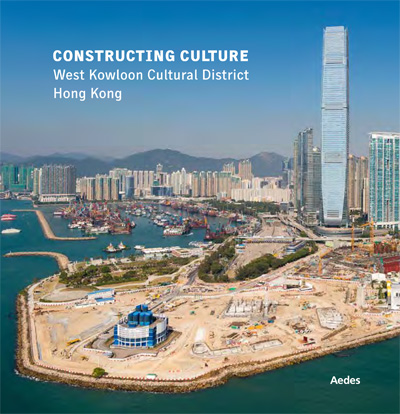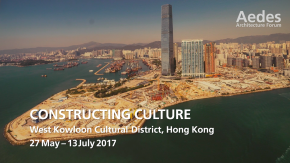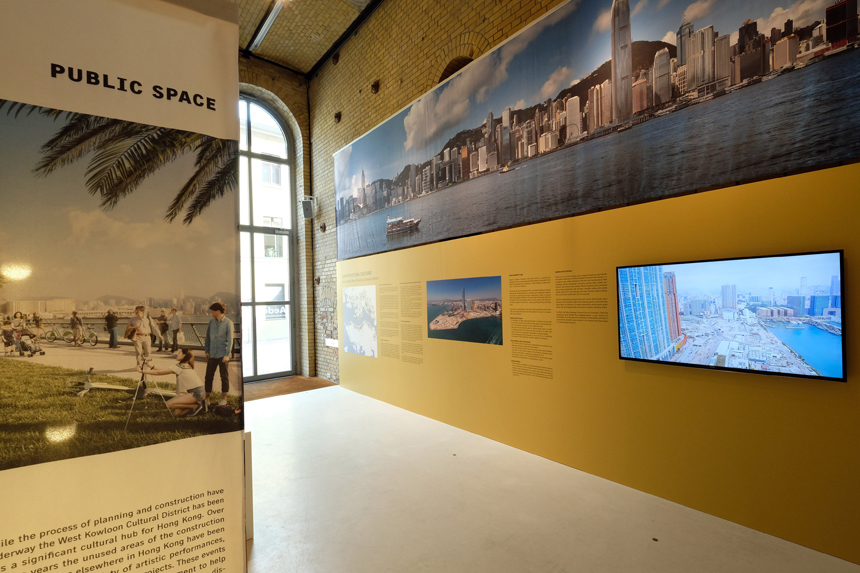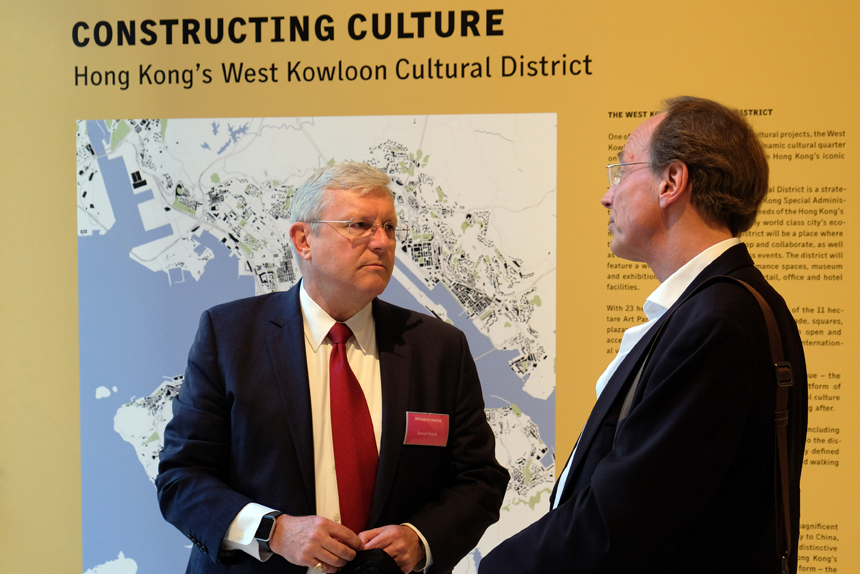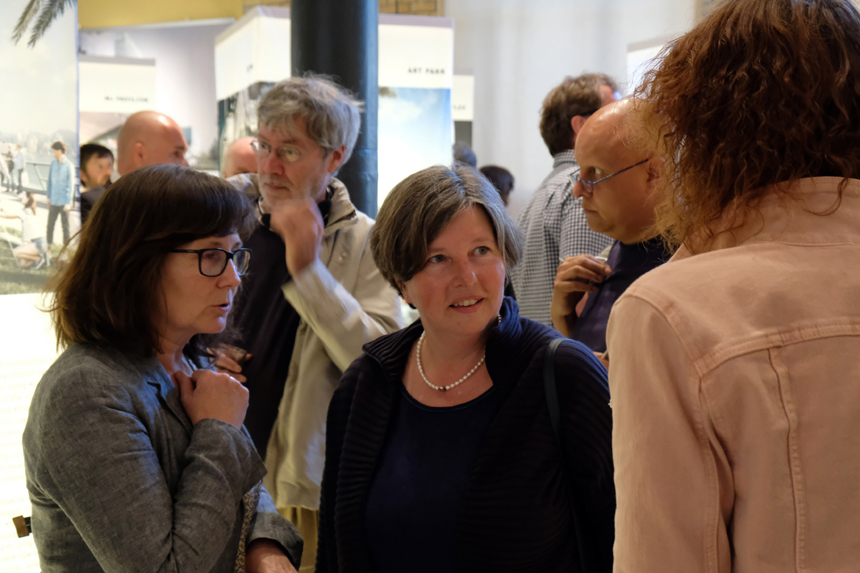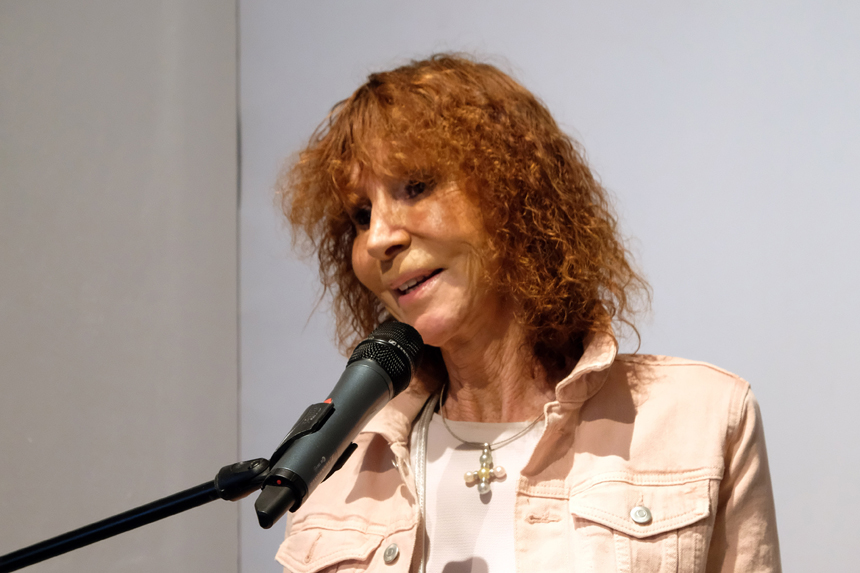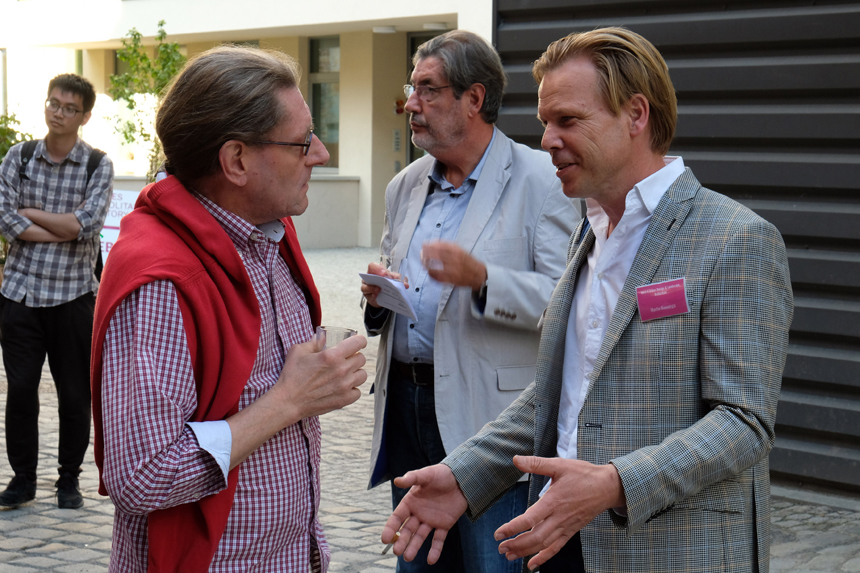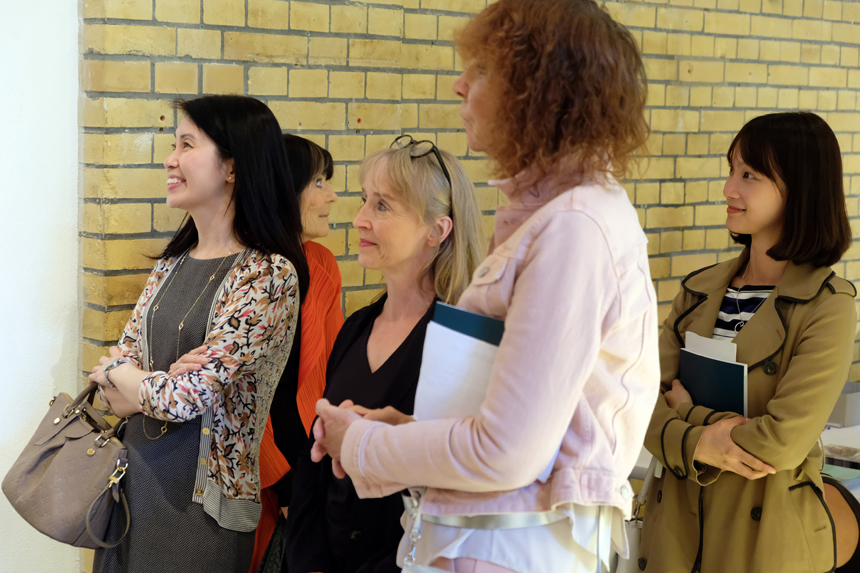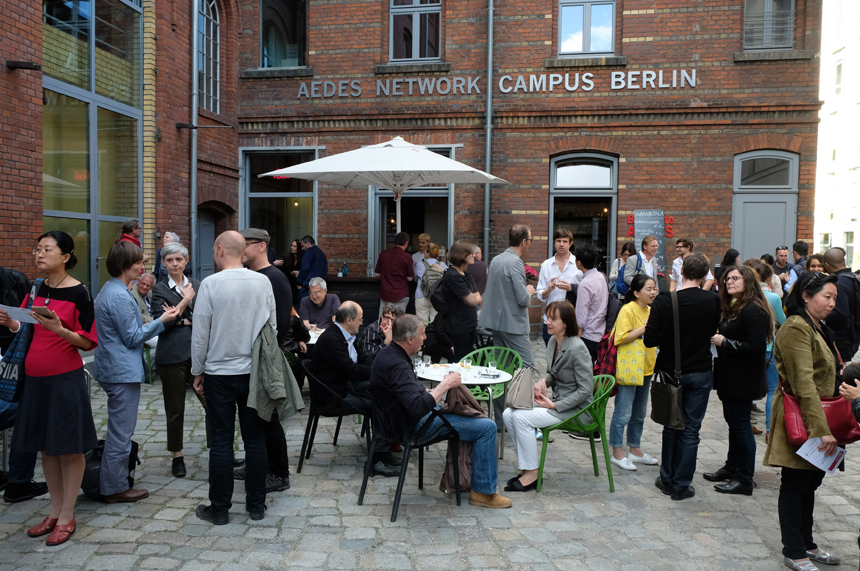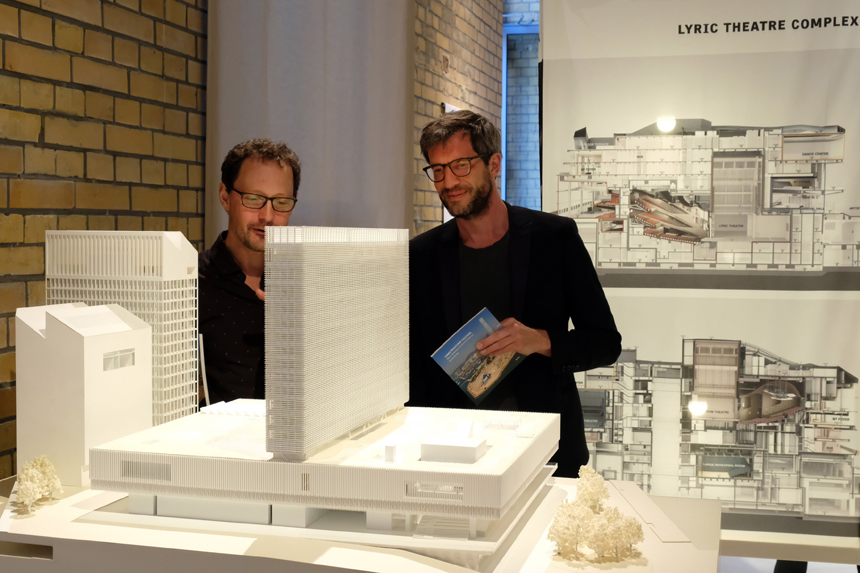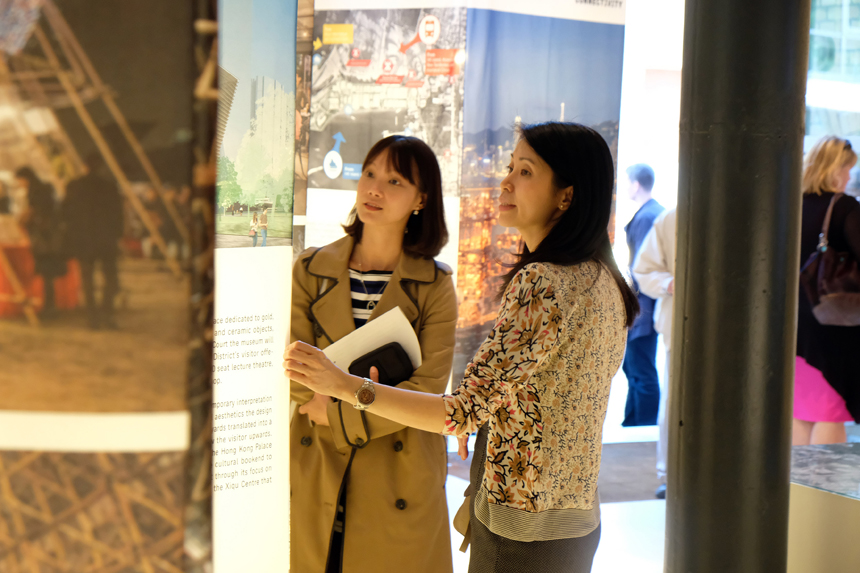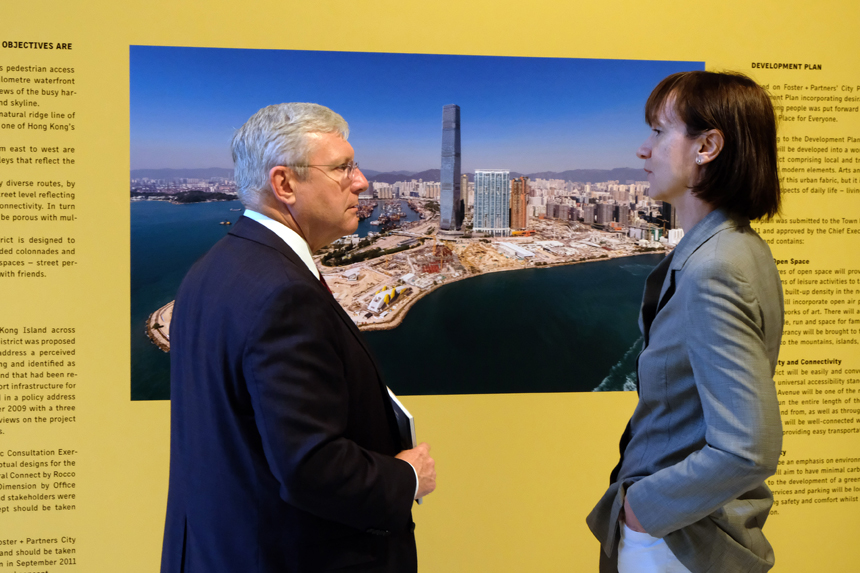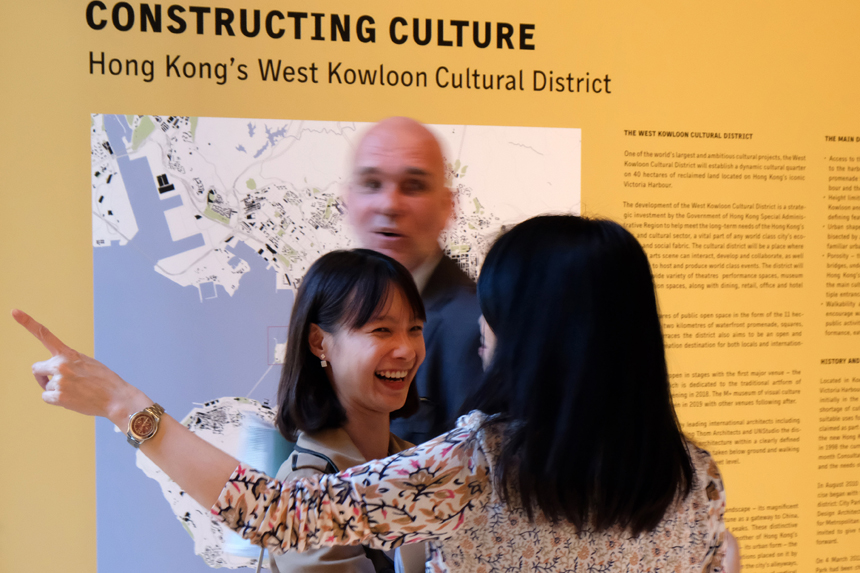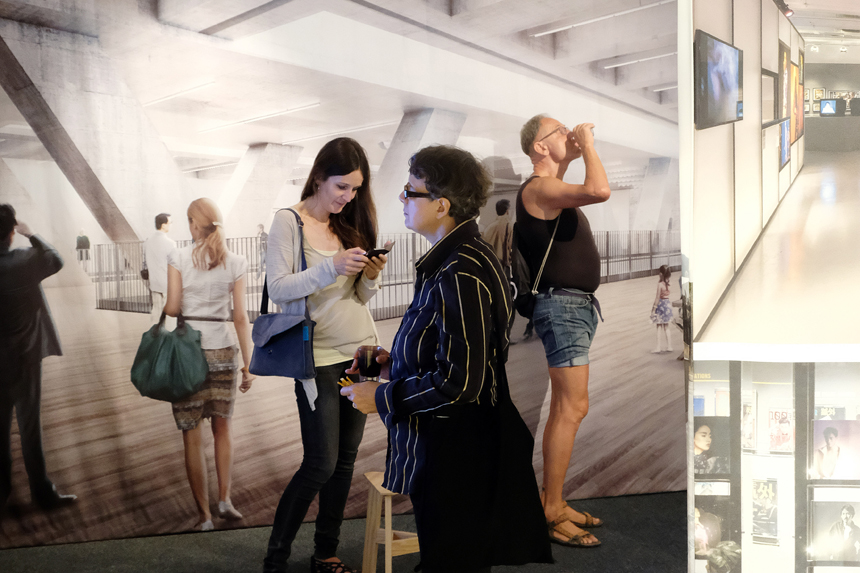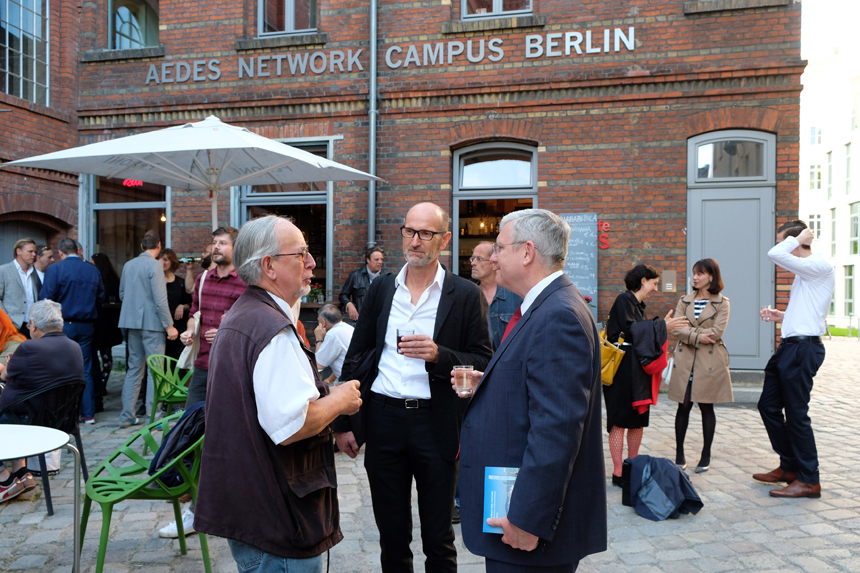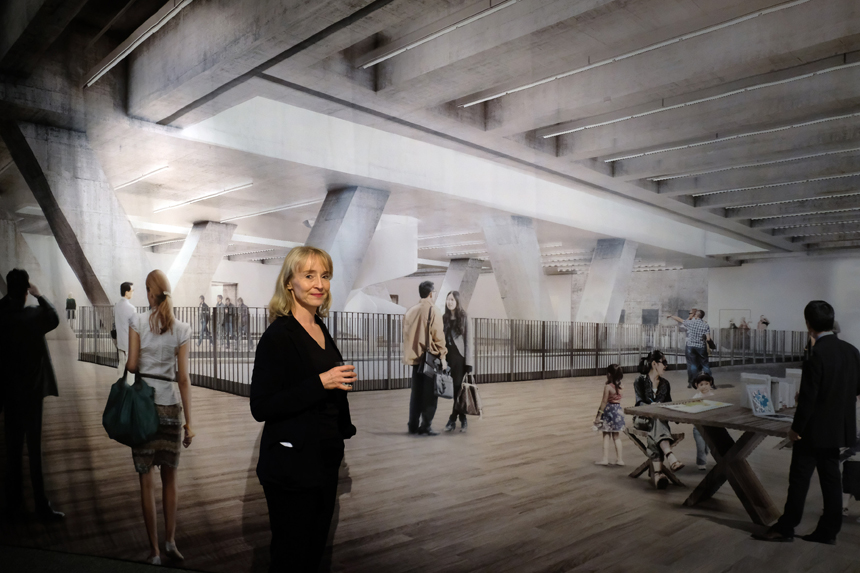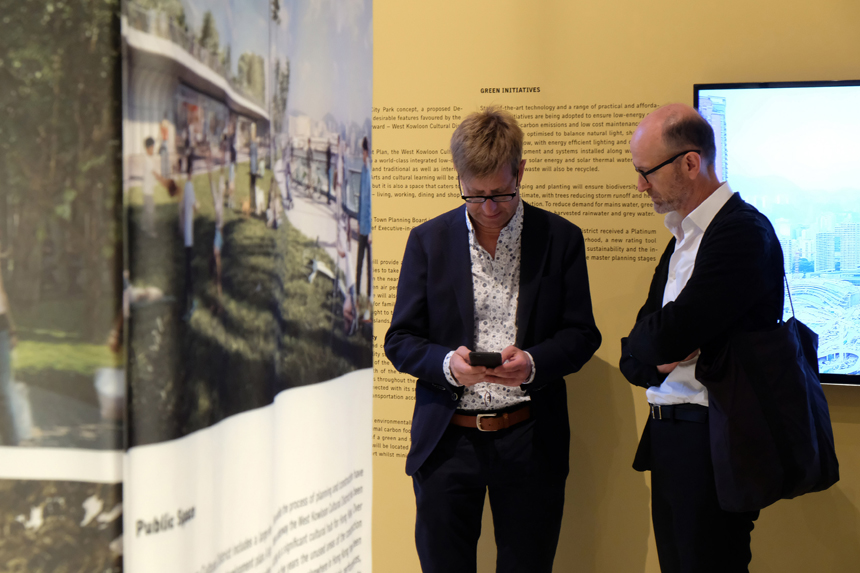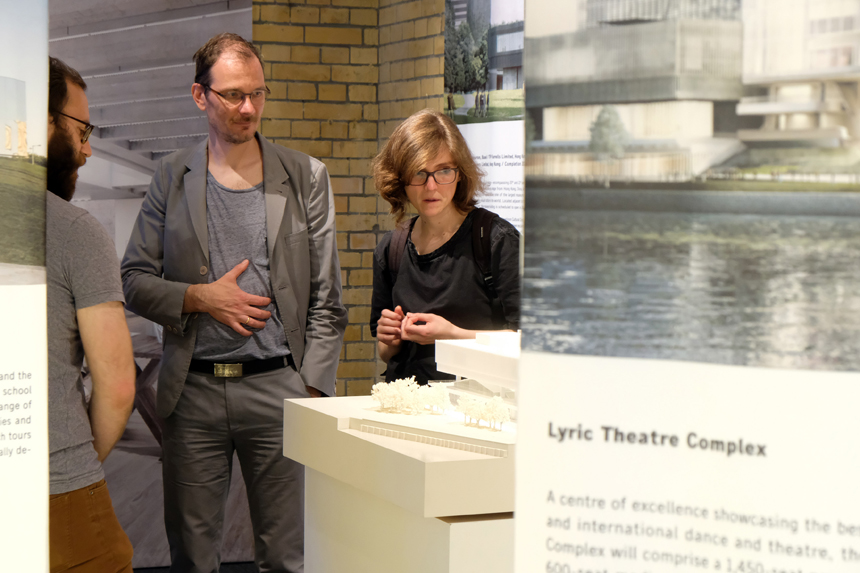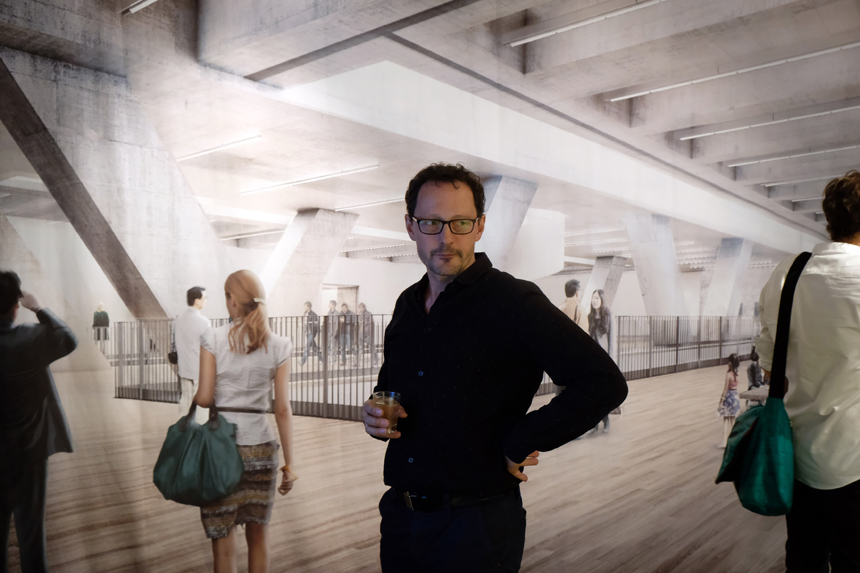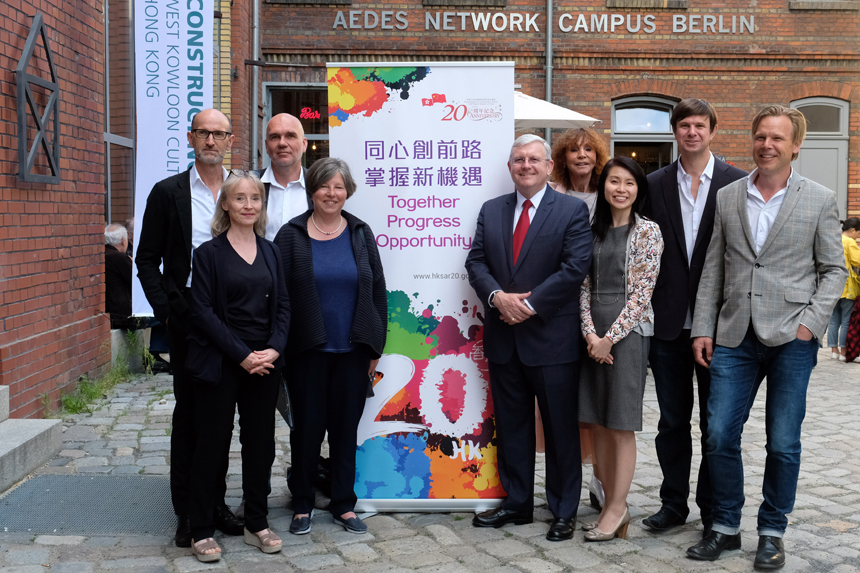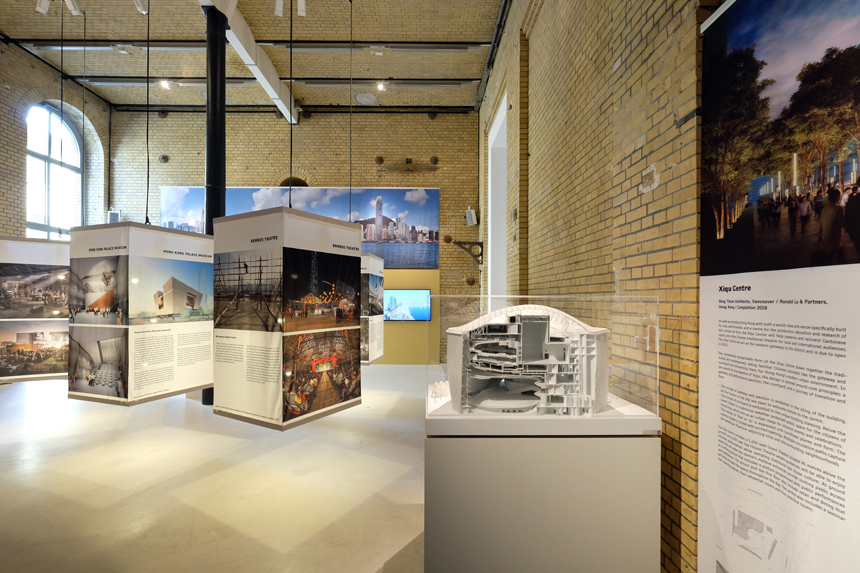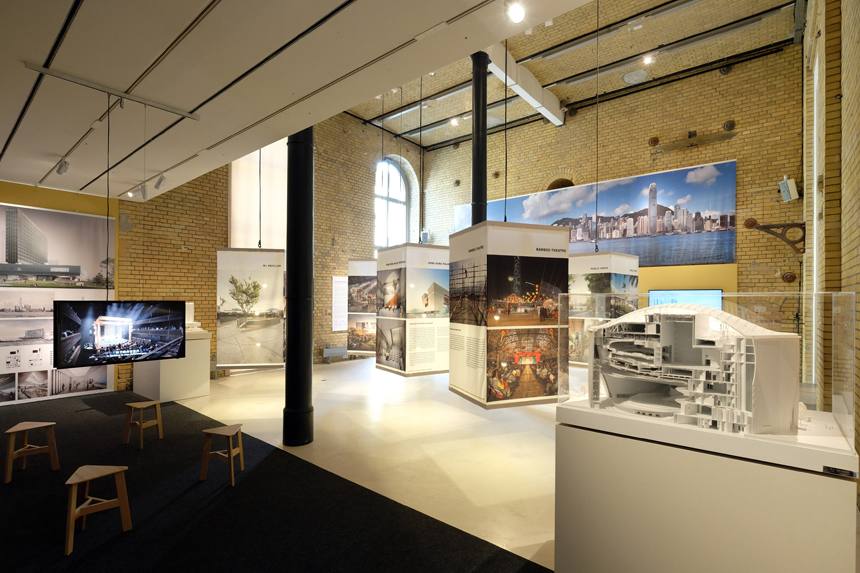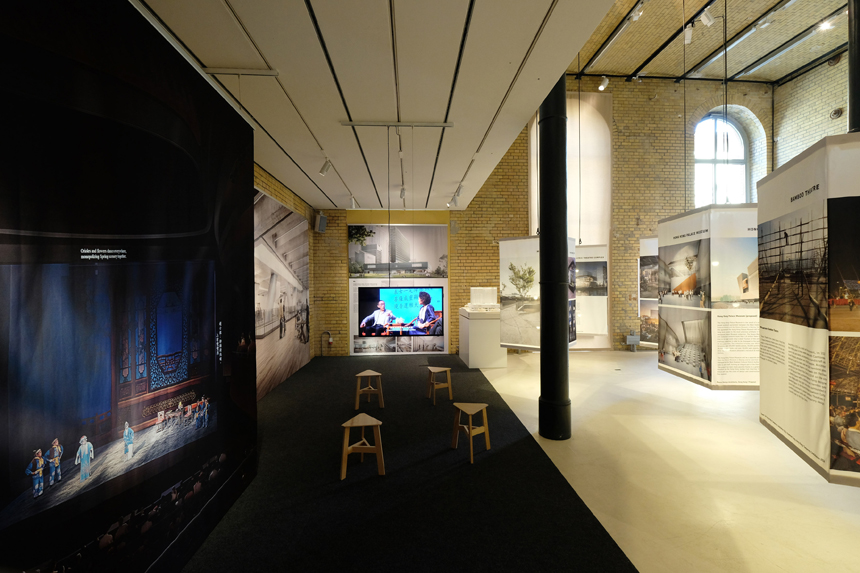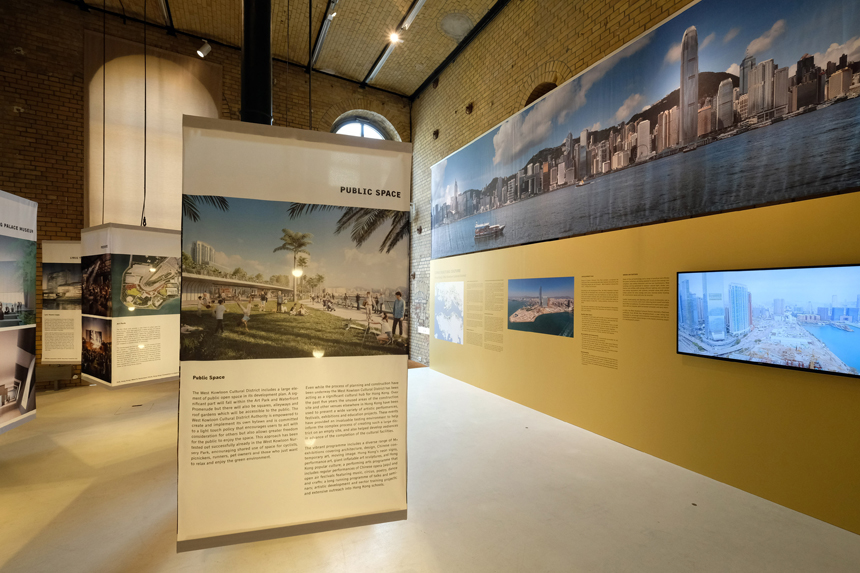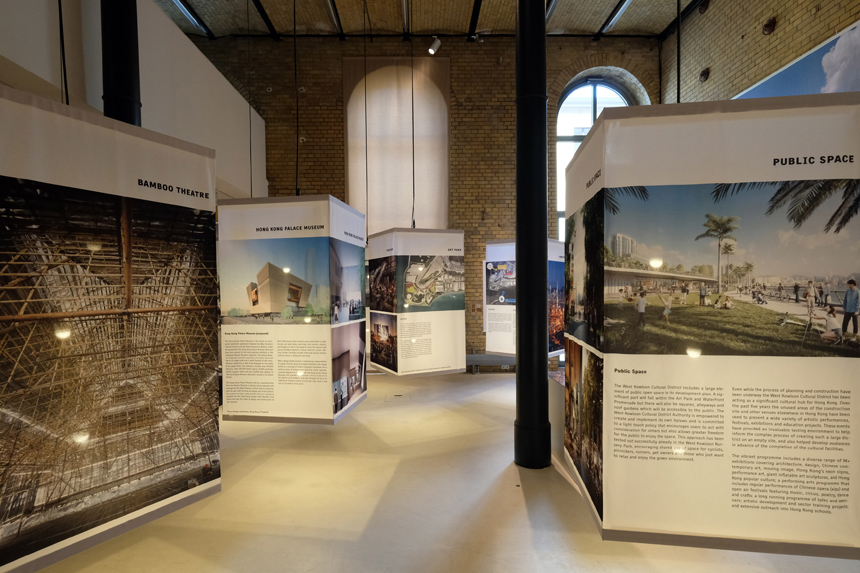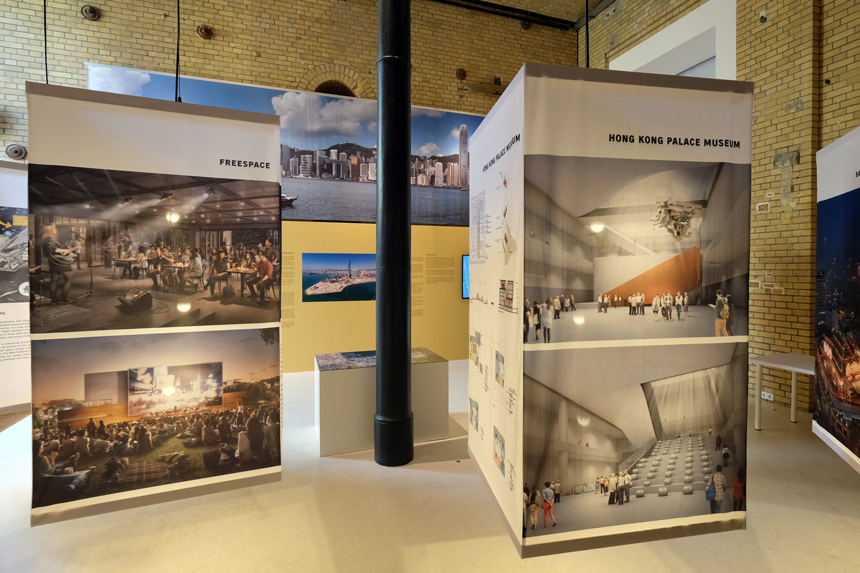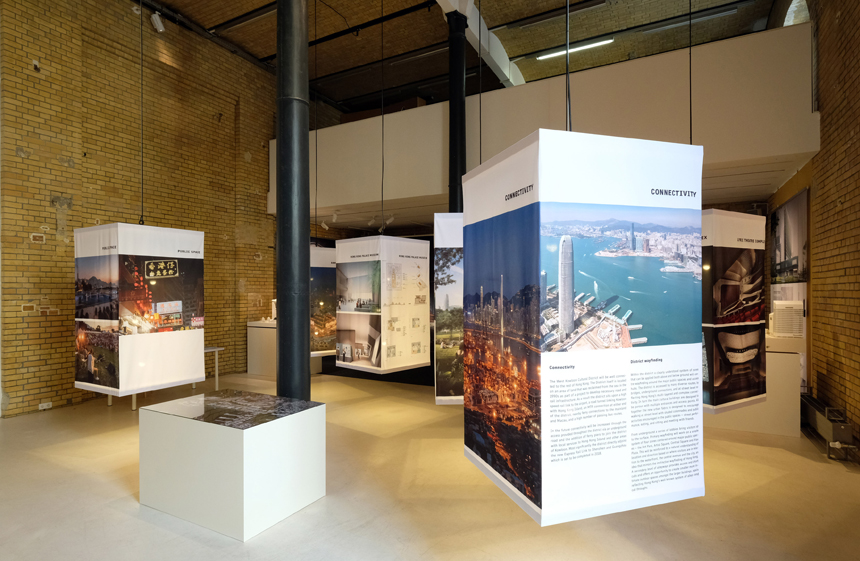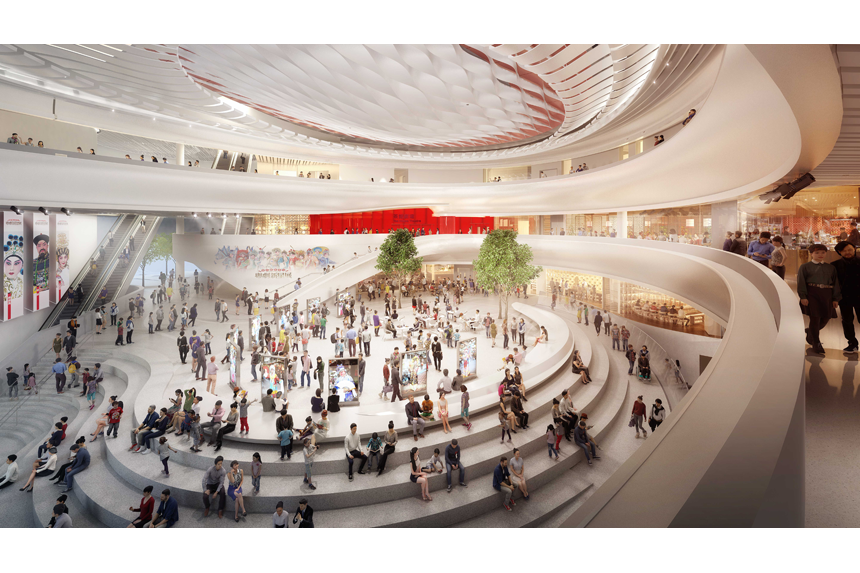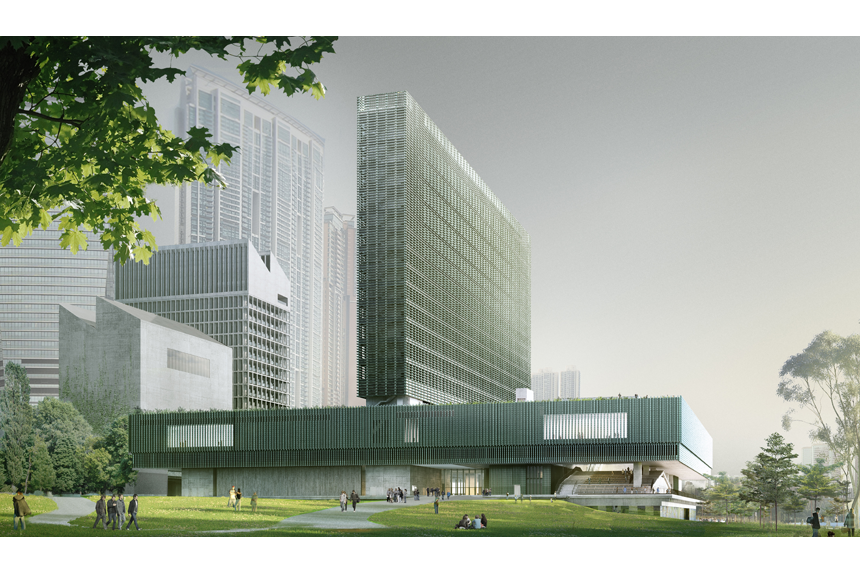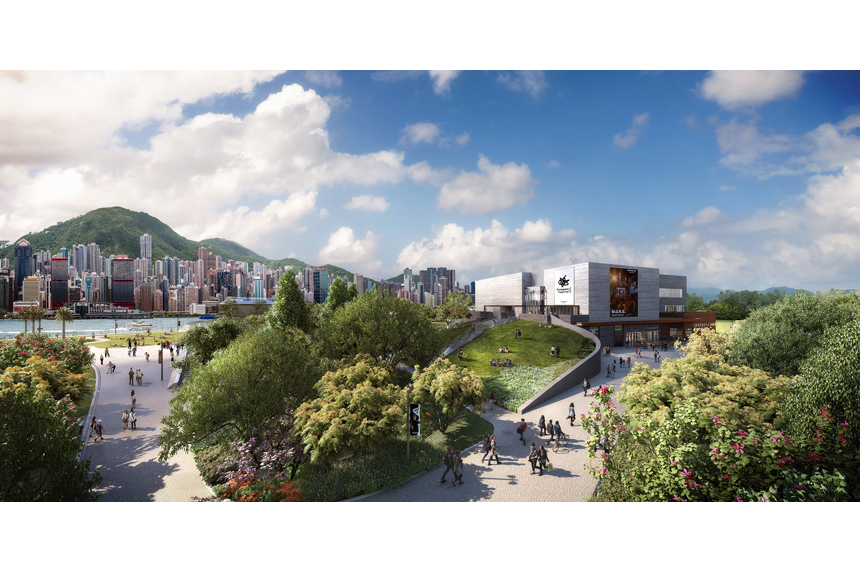One of the world’s largest and ambitious cultural projects, the West Kowloon Cultural District will be established on Hong Kong’s iconic Victoria Harbour. The district will be a new cultural destination with theaters, performance spaces, museums, dining, retail, office and hotel facilities. Featuring buildings by leading international architects including Herzog & de Meuron, Bing Thom Architects and UNStudio the district will deliver landmark architecture. With 23 ha of public space in the form of the Art Park, a waterfront promenade, plazas and terraces the district will also be an outdoor recreation destination for locals and international visitors. The exhibition presents the emerging new quarter looking at its role as both a supporter of traditional culture and a pioneer in contemporary arts and innovation.

Arial View, Building Site
One of the world’s largest and ambitious cultural projects, the West Kowloon Cultural District will establish a dynamic cultural quarter on 40 hectares of reclaimed land located on Hong Kong’s iconic Victoria Harbour.
The development of the West Kowloon Cultural District is a strategic investment by the Government of Hong Kong Special Administrative Region to help meet the long-term needs of the Hong Kong’s arts and cultural sector, a vital part of any world class city’s economic and social fabric. The cultural district will be a place where the local arts scene can interact, develop and collaborate, as well as a place to host and produce world class events. The district will feature a wide variety of theaters, performance spaces, museums and exhibition spaces, along with dining, retail, office and hotel facilities. With 23 hectares of public open space in the form of the 11 hectare Art Park, two kilometres of waterfront promenade, squares, plazas and terraces the district also aims to be an open and accessible recreation destination for locals and international visitors.
This exhibition takes a closer look at the emerging Cultural District looking at its role as both a supporter of traditional culture and a pioneer in contemporary art and innovation; as a local destination that will be a major tourist attraction; as a ‘smart’ purpose built district that promotes the human values of artistic creativity; and as a district that reflects Hong Kong’s unique identity as part of China.
The district will open in stages with the first major venue - the Xiqu Centre, which is dedicated to the traditional artform of Chinese Opera, opening in 2018. The M+ museum of visual culture is scheduled to open in 2019 with other venues following after.
Featuring buildings by leading international architects including Herzog & de Meuron, Bing Thom Architects and UNStudio the district will deliver landmark architecture within a clearly defined cultural precinct where traffic is taken below ground and walking and cycling are encouraged at street level.
Even while the process of planning and construction have been underway the West Kowloon Cultural District has been acting as a significant cultural hub for Hong Kong. Over the past five years the construction site and other venues have been used to present a wide variety of artistic performances, festivals, exhibitions and education projects. The vibrant programme includes a diverse range of M+ exhibitions covering architecture, design, Chinese contemporary art, moving image, Hong Kong’s neon signs, performance art, giant inflatable art sculptures, and Hong Kong popular culture; a performing arts programme that includes regular performances of Chinese opera (Xiqu) and open air festivals featuring music, circus, poetry, dance and crafts; an extensive programme of talks and seminars; artistic development and sector training projects; and extensive outreach into Hong Kong schools. These events have provided an invaluable testing environment to help inform the complex process of creating such a large district on an empty site, and also helped develop audiences in advance of the completion of the cultural facilities.
The West Kowloon Cultural District has also been considering the use of open public space, a topic of considerable significance for a cultural district located at the heart of one of the most densely populated cities on earth. Open air markets, street performance, bike hire schemes, pet areas, public art installations have all being trialed, along with the use of mobile apps to disseminate on site information – a must in a city where the mobile penetration exceeds 200%.
Projects
Xiqu Centre I Bing Thom Architects and Ronald Lu & Partners I Completion 2018
As well as providing Hong Kong with both a world-class arts venue specifically built for xiqu performances, and a centre for the production, education and research of this unique art form, the Xiqu Centre will help preserve and reinvent Cantonese opera and other Chinese traditional theater for local and international audiences. The centre includes a 1100 seat auditorium and 200 seat tea house theatre as well as a large atrium for public performances and exhibitions. The Xiqu Centre will act as the eastern gateway to the district and is due to open in 2018.

Xiqu Centre
M+ I Herzog & de Meuron with TFP Farrells and Ove Arup & Partners HK I Completion 2019
Hong Kong’s museum for visual culture, - encompassing 20th and 21st century art, design and architecture, and moving image from Hong Kong, China, Asia and beyond – M+ will be one of the largest museums of modern and contemporary visual culture in the world, housing 17,000 square metres of exhibition space, three cinemas, a learning centre and auditorium. Located adjacent to the Art Park on the waterfront, the museum building is scheduled to open in 2019.

M+
Freespace I DLN and West 8 and ACLA I Completion 2019
Situated right in the centre of the Art Park is Freespace, a place where the public is invited to freely explore, encounter and be inspired by new artistic experience through innovative programming. A black box theatre will provide a flexible performance space accommodating up to 450 seated people or 900 standing. There is also a foyer where local live music will be presented in a bar and café environment, and a large lawn, where an outdoor stage will be set up for large-scale events and festivals. Freespace is scheduled to open in 2019.

Art Park / Freespace
Art Park I DLN and West 8 and ACLA I Completion in stages from 2018
The landscaped Art Park will contain a rich variety of trees and plants – including woodland, waterfront and urban forest species – and provide several lawns for leisure and relaxation. Close attention has been given to shade and topographical variation, while areas for outdoor sculptures and installations by M+ will be integrated into the park design.
M+ Pavilion I VPANG architects ltd + JET Architecture Inc + Lisa Cheung I Completion 2016
The M+ Pavilion, which opened in mid-2016, currently serves as the primary site for M+ exhibitions in the run-up to the completion of the M+ building. Located within the site of the future Art Park, in the future it will provide a new space for artists, designers and organisations to stage independent small-scale exhibitions and events.
Lyric Theatre Complex I UNStudio and AD+RG I Completion 2021
A centre of excellence showcasing the best of Hong Kong and international dance and theatre, the Lyric Theatre Complex will comprise 1,450-seat proscenium theatre, a 600-seat medium theatre and a 270-seat studio theatre. The complex will also house extensive rehearsal facilities and a Resident Company Centre that will serve as an exploration, development and collaboration hub for dance companies and artists in Hong Kong. The Lyric Theatre Complex is scheduled to complete 2021.
Palace Museum I Rocco Design Architects I Proposal
The Hong Kong Palace Museum will be a separate entity from the Palace Museum in Beijing and be operated and managed by the West Kowloon Cultural District Authority, with its own staff, forming an integral part of the District. This project has been made possible thanks to a generous donation by the Hong Kong Jockey Club Charities Trust which will pay the costs of design and construction of the museum. With 7600 square feet of gallery space dedicated to gold, bronze and jade items, paintings, and ceramic objects, and displays on life in the Imperial Court the museum will enrich the West Kowloon Cultural District’s visitor offering. Further facilities include a 400 seat lecture theatre, activity rooms, a restaurant and shop.
An Aedes catalogue will be published.
The exhibition is part of the Asia Pacific Weeks 2017 and co-organised with the Hong Kong Economic and Trade Office in Berlin of the Government of the Hong Kong Special Administrative Region.

SPONSORS
West Kowloon Cultural District

CATALOGUE
An Aedes catalogue will be published.
English, € 10,-
To the catalogue order
